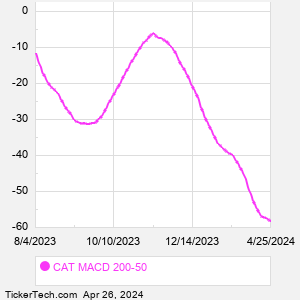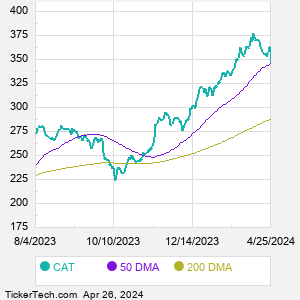Caterpillar is a manufacturer of construction and mining equipment, off-highway diesel and natural gas engines, industrial gas turbines and diesel-electric locomotives. Co.'s Construction Industries segment supports customers using machinery in infrastructure, forestry and building construction. Co.'s Resource Industries segment supports customers using machinery in mining and heavy construction and quarry and aggregates. Co.'s Energy and Transportation segment supports customers in oil and gas, power generation, marine, rail and industrial applications, including Co.'s machines. Co. also provides financing and related services through its Financial Products segment.
When researching a stock like Caterpillar, many investors are the most familiar with Fundamental Analysis — looking at a company's balance sheet, earnings, revenues, and what's happening in that company's underlying business. Investors who use Fundamental Analysis to identify good stocks to buy or sell can also benefit from CAT Technical Analysis to help find a good entry or exit point. Technical Analysis is blind to the fundamentals and looks only at the trading data for CAT stock — the real life supply and demand for the stock over time — and examines that data in different ways. One of those ways is to calculate a Simpe Moving Average ("SMA") by looking back a certain number of days. One of the most popular "longer look-backs" is the CAT 200 day moving average ("CAT 200 DMA"), while one of the most popular "shorter look-backs" is the CAT 50 day moving average ("CAT 50 DMA"). A chart showing both of these popular moving averages is shown on this page for Caterpillar. Comparing two moving averages against each other can be a useful visualization tool: by calculating the difference between the CAT 200 DMA and the CAT 50 DMA, we get a moving average convergence divergence indicator ("CAT MACD"). The CAT MACD chart, in conjunction with the chart of the moving averages, basically helps in visualizing how the moving averages are showing convergence (moving closer together), or divergence (moving farther apart). |



